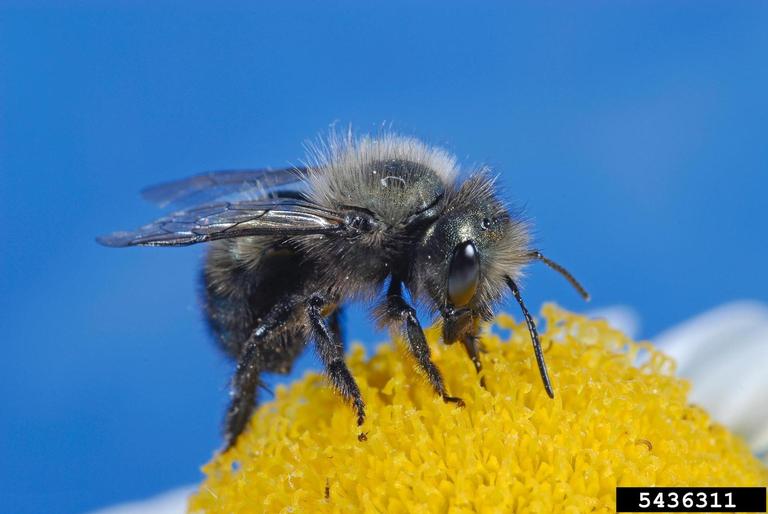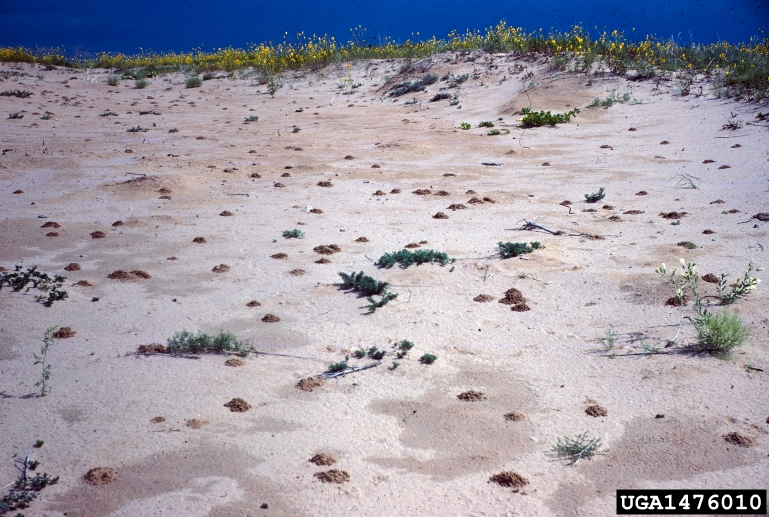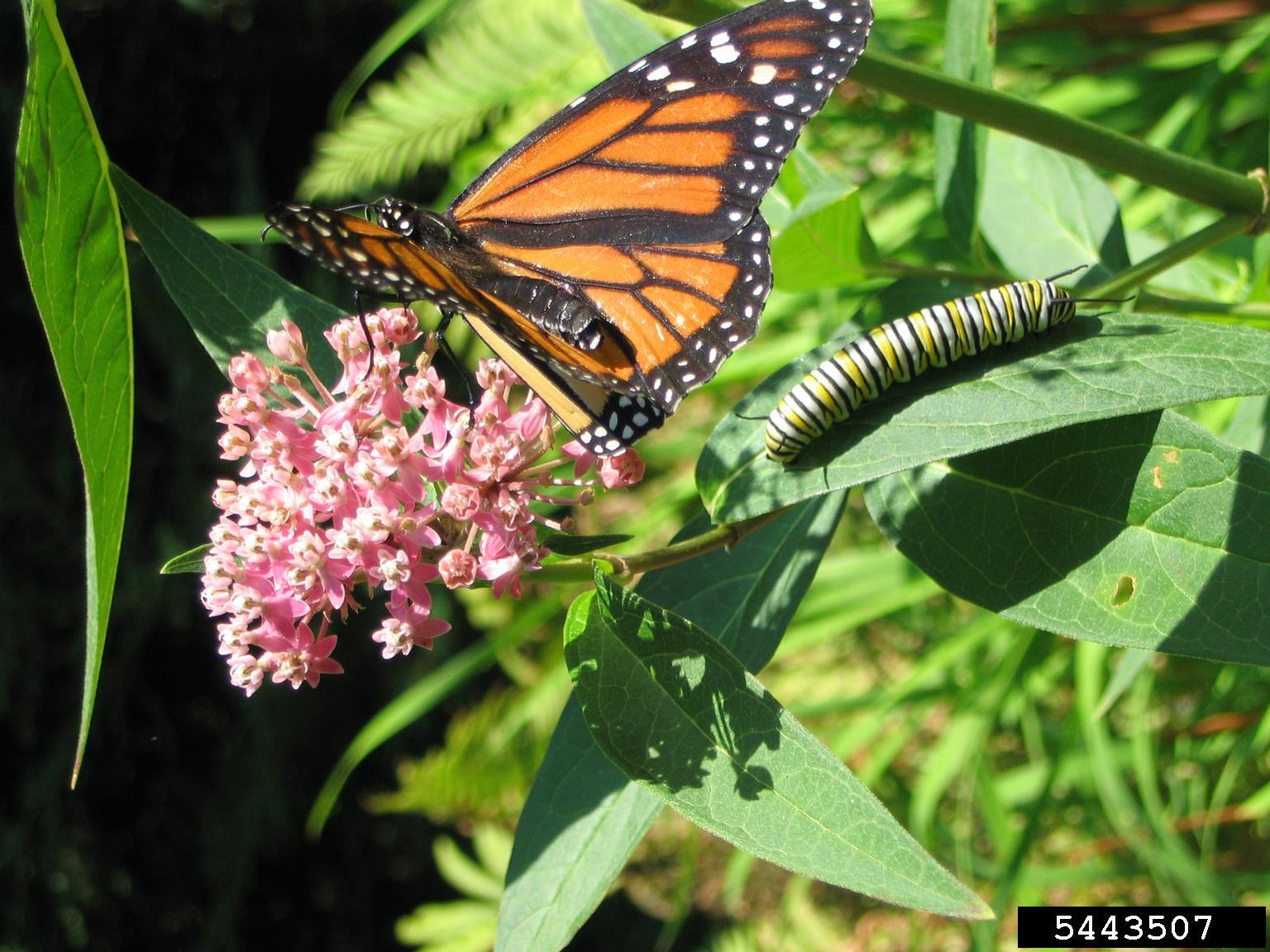 Protect Pollinators and Other Beneficial Insects - January 2, 2018 Jeff Schalau, Agent, Agriculture & Natural Resources University of Arizona Cooperative Extension, Yavapai County Many folks propose changing their behavior for the better at this time of year in the form of “New Year’s resolutions”. I propose that all backyard gardeners make their New Year’s resolution to support pollinators and other beneficial insects by enhancing garden habitat. In this column, I’ll share some easy ways to accomplish this goal with visually pleasing enhancements that provide observable results. I’ll also provide additional resources that will help you to dig deeper in your efforts. Honey bees are one species among thousands of different bees. Honey bees are unique in their societal life cycle and storage of large food reserves. Conversely, most native bees are solitary, nest individually, and do not store surplus food. Honey bees are not native to America and were imported from Europe early on during colonization. Native bees, however, have evolved with the existing flora and some have established intricate relationships with particular flowers. Conserving populations of native bees is important because they are valuable pollinators of many plant species, often performing pollination more effectively than introduced honey bees. There are over 20,000 native bees worldwide and there may be over one thousand species present in Arizona. Native bees nest in bare soil, wood, dead plant stems, and other natural materials. Many gardeners provide nesting materials such as bamboo stems, nesting blocks, and bumblebee houses. These should be placed in an open, but protected spot that receives plenty of early morning sun which helps bees warm to flying temperatures. These materials provide shelter. Gardeners can also provide water for beneficial insects by placing a saucer of water in the garden or a small pile of rocks in your birdbath or water feature where pollinators can land and drink. Many gardeners purchase blue orchard mason bees (Osmia lignaria) and introduce them to their gardens. These bees can be sustained over time by providing nesting materials for shelter, pollen for food, and water when it is in limited supply. Most ecosystems have existing populations of native bees. Their habitat can be greatly enhanced by limiting the application of broad spectrum insecticides and applying appropriate, least toxic insecticides at times an in ways that minimize negative impacts to bees and other beneficial insects. Examples of these insecticides are soaps, oils, microbial products (bacteria, fungi, and virus-based formulations), botanical products (neem, peppermint, clove oil, etc.), and physical barriers such as fabric row cover. These should be applied very early in the morning or in the evening when bees are not actively foraging. While bees are the most common group of pollinators, other insects and animals, including wasps, butterflies, flies, beetles, bats, and hummingbirds, are significant pollinators as well. Planting a mixture of locally adapted perennials that bloom from spring through fall will benefit pollinators while also perpetuating these beneficial plant species in your landscape. Horticulturist, David Salman of High Country Gardens, recently presented in Flagstaff. He presented a suite of pollen-producing plants suitable for our area which I have included with the online edition of this column. Monarch butterfly habitat can also be enhanced by planting appropriate plants to feed caterpillars and nectar plants to sustain adults. There are many local efforts in progress to plant and assess various milkweed species that support monarch caterpillar populations and learn which milkweed species is most preferred and best supports successful reproduction. Emerging adults mate within three to eight days and the female lays her eggs on milkweed species that support larva feeding. The migrating adult monarchs also rely on nectar to provide energy for their migration to overwintering grounds in Central Mexico and coastal California. Many organizations are growing and selling milkweed plants as well as collecting data regarding feeding preferences and successful cultivation. Several projects are in progress in Yavapai County and across northern Arizona. It’s a new year! I encourage all of my readers to plant a few new pollen producing plants, consider enhancing habitat for these organisms, selecting and applying pesticides in ways that minimize negative impacts on beneficial insects, and learn more about pollinators and their biology. You can get started by reviewing the many resources I’ve linked below. Follow the Backyard Gardener on Twitter – use the link on the BYG website. If you have other gardening questions, call the Master Gardener help line in the Camp Verde office at 928-554-8992 or e-mail us at verdevalleymg@gmail.com and be sure to include your name, address and phone number. Find past Backyard Gardener columns or provide feedback at the Backyard Gardener web site: http://cals.arizona.edu/yavapai/anr/hort/byg/. Photos  Mason bee (Osmia sp., Joseph Berger, Bugwood.org ).
Mason bee (Osmia sp., Joseph Berger, Bugwood.org ). Digger bee (Anthophora spp.) nests is soil (Howard Ensign Evans, Colorado State University, Bugwood.org).
Digger bee (Anthophora spp.) nests is soil (Howard Ensign Evans, Colorado State University, Bugwood.org). Monarch butterfly (Danaus plexippus) adult and larva on milkweed in perennial garden, (Rob Routledge, Sault College, Bugwood.org).
Monarch butterfly (Danaus plexippus) adult and larva on milkweed in perennial garden, (Rob Routledge, Sault College, Bugwood.org).Additional Resources Conserving Pollinators: A Primer for Gardeners eXtension articles.extension.org/pages/19581/conserving-pollinators:-a-primer-for-gardeners Native Bees eXtension articles.extension.org/pages/71162/native-bees Understanding Native Bees, the Great Pollinators: Enhancing Their Habitat in Maine University of Maine Cooperative Extension extension.umaine.edu/publications/7153e/ Orchard Mason Bees Washington State University Extension s3.wp.wsu.edu/uploads/sites/2053/2017/01/Orchard-Mason-Bees1.pdf Attracting Native Bees to Your Landscape Colorado State University Extension extension.colostate.edu/topic-areas/insects/attracting-native-bees-landscape-5-615/ Building and Managing Bee Hotels for Wild Bees Michigan State University Extension pollinators.msu.edu/publications/building-and-managing-bee-hotels-for-wild-bees/ Bumble Bee Nest Iowa State University Extension and Outreach hortnews.extension.iastate.edu/2011/6-1/bumblebee.html Monarch Life Cycle University of Minnesota Extension https://monarchlab.org/biology-and-research/biology-and-natural-history/breeding-life-cycle/life-cycle/#egg Less Toxic Insecticides University of California Integrated Pest Management ipm.ucanr.edu/QT/lesstoxicinsecticidescard.html Plants That Attract Bees David Salman, Chief Horticulturist, High Country Gardens cals.arizona.edu/yavapai/anr/hort/byg/archive/SalmanPollinatorPlantList2018.pdf |